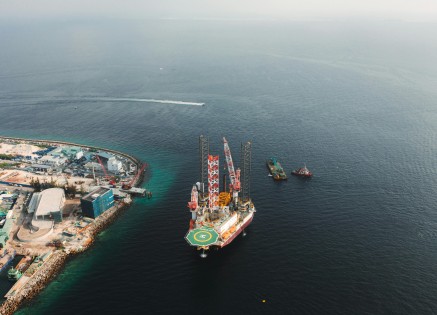Copyright © 2025 lmitac.com All Rights Reserved. Contact - Terms and Conditions - Privacy Policy - Quality Policy - Become an instructor - Vacancies - Sitemap
London Maritime Academy is a trade name for London Premier Groupversion: 2.9.0
London Maritime Academy is a trade name for London Premier Group

Posted on : 5/22/2025, 11:45:10 PM
Since January 2020, the International Maritime Organisation (IMO) announced a mandatory regulation in the maritime shipping industry to manage and organise low sulphur fuel oil used by ships.
Moreover, the low sulphur diesel fuel regulation aims to reduce the cap on sulphur in fuel from 3.5% to 0.5% in all marine fuel oils to gain the great environmental and sustainable safety benefits from this sulfur fuel oil regulation.
In this article, we will share with you all the important and updated details about the low sulphur fuel oil (LSFO), different types of sulfur marine fuels, how ships could comply with the LSFO rule, and what major expected benefits from these marine fuel regulations.
The called Low Sulphur Fuel Oil, or LSFO, is a type of marine fuel with a sulphur content of 0.5% level or less, developed by blending different refinery streams to create marine fuels that meet the International Maritime Organisation’s (IMO) 2020 rules on sulphur emissions.
There are many impacts from the implementation of low sulphur fuel oil guidance, including not having to use exhaust gas clean operating systems by ships and vessels following this marine fuel law.
Furthermore, the use of low sulfur fuel oil is mandatory for all ships and workers in the maritime industry, including the charter party, ship owners, and port operators.
There are many developed types of low sulfur diesel fuels that ships and vehicles could use in their energy-producing process, while following the IMO referred regulations and guidelines in all countries:
To comply with the IMO low sulphur fuel regulations and toxic properties, a vessel must use marine fuels with a sulphur content not exceeding 0.5%, with very low sulfur or ultra sulfur oils.
This could also be done by being equipped with approved exhaust gas cleaning systems or gas distillates to remove residual sulphur.
Additionally, the ships and vessels are demand to maintain proper documentation reports to read, with notes and fuel and gas changeover procedures, do regular fuel sampling tests to reach required published pollution levels, limit engine failure issues, and update fuel systems and lines when required.

Now, to the focal point of our article, it is time to talk about the benefits of low sulfur diesel fuel based on the shipping training courses in London for all parties involved in the maritime industry:
Low sulfur diesel fuel reduces sulphur oxide levels, leading to reduced impacts on human health with cleaner air in coastal and other areas. This result is important for port workers and nearby residential and commercial communities.
The IMO 2020 regulations are mandatory ones for everyone in the shipping industry, thus, boats and ships need to use the alternative low sulfur fuel to avoid fines or sanctions, show a growing commitment to sustainable operations, and cover the required emission percentage from container tanks and vessels.
The whole goal of starting the LSFO IMO regulation solutions is to reduce or cut down sulfur oxide (SOx), nitrogen oxide (NOx), and particulate matter emissions to help establish better global air quality and reduce acid rain.
Sulfur fuel oils produce fewer harmful residues and pollutants during combustion and shipping, which leads to a lower environmental footprint of bunker steaming in maritime activities and protects the marine environment.
Clean oil fuels, including low sulfur diesel fuels, burn cleaner, leading to more efficient engine performance, lower maintenance needs, and a longer equipment lifecycle.
All the modern engines and emission control technologies require and work better with cleaner oil fuels, therefore, using low sulfur fuel oil supports the use of innovation and operational upgrades in the shipping industry.
The low sulphur fuel is a high-quality fuel oil that is becoming popular among shipping companies and operators to benefit from all the great advantages and unique qualities.
However, understanding all the included sulfur content is vital to be able to use it and implement the needed equipment without facing any losses.
Low Sulphur Fuel Oil (LSFO) is a marine fuel with a sulphur content of 0.5% or less, in compliance with IMO 2020 regulations. It is produced by blending refinery streams to reduce sulphur emissions during vessel operations, contributing to cleaner marine transportation.
The IMO 2020 regulation aims to reduce sulphur oxide (SOx) emissions from ships to improve global air quality, reduce acid rain, and protect human health—particularly in port areas and coastal regions.
Ships can comply by:
Yes. Institutions like London Premier Maritime Academy and other maritime training centers offer specialized courses on IMO 2020, LSFO usage, engine compatibility, and regulatory documentation practices, especially for marine engineers, port inspectors, and fleet managers.
In most cases, yes—but fuel compatibility should be assessed. Some older engines may need system flushing or minor modifications before switching to LSFO. It’s also important to ensure lubricity and stability of the new fuel blend.
Non-compliant ships may face:
Not necessarily. In fact, many LSFO variants are cleaner-burning, which helps reduce engine wear, lower carbon buildup, and extend equipment lifespan, especially when combined with advanced emission technologies.